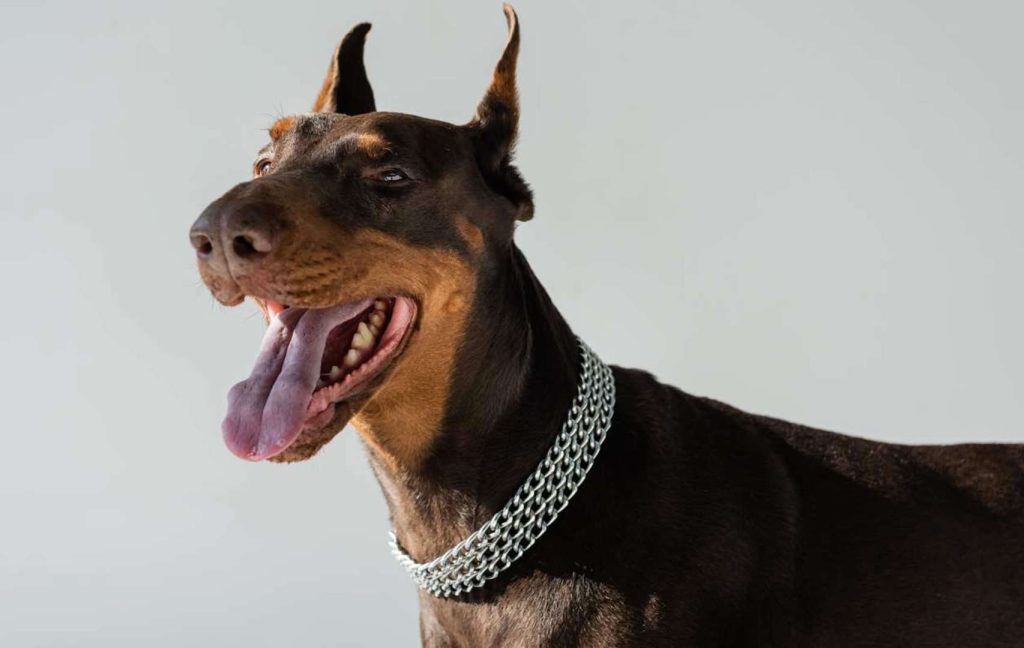In an era where home security concerns are increasingly prevalent, many families are turning to a time-tested solution: guard dogs. While modern security systems offer sophisticated technological advantages, the unique combination of protection, companionship, and deterrence that guard dogs provide remains unmatched. This comprehensive guide will explore the most effective dog breeds for home protection, examining their characteristics, training requirements, and how they can be integrated into your home security strategy.
Recent statistics from the National Council for Home Safety and Security reveal that homes without security dogs are three times more likely to be targeted by burglars. This startling figure underscores the vital role that guard dogs play in home protection. However, choosing the right breed is crucial – it’s a decision that requires careful consideration of various factors, from your living situation to the specific security challenges you face.
Understanding Guard Dog Characteristics
The ideal guard dog combines several crucial characteristics: intelligence, loyalty, physical capability, and a balanced temperament. These dogs must be able to discern genuine threats from normal daily activities while maintaining a gentle disposition with family members. Understanding these traits is essential for selecting the right breed for your specific situation.
Intelligence in guard dogs manifests as the ability to assess situations quickly and respond appropriately. This includes distinguishing between routine events and genuine threats, understanding complex commands, and maintaining consistent behavior patterns. The most effective guard dogs demonstrate high levels of working intelligence, which refers to their ability to learn and perform tasks.
Physical capabilities are equally important. An effective guard dog must possess the strength, agility, and endurance to respond to threats when necessary. However, these physical attributes must be balanced with controllability – the dog should be strong enough to deter intruders but manageable enough for the owner to handle safely.

Top 10 Guard Dog Breeds
1. German Shepherd
Renowned for their intelligence and versatility, German Shepherds have long been the gold standard in protection dogs. Their natural protective instincts, combined with high trainability and loyalty, make them excellent guardians for families. Originally bred as herding dogs, they possess an innate ability to monitor and protect their territory.
Key characteristics: – Intelligence ranking: Top 3 in canine intelligence studies – Weight range: 50-90 pounds – Life expectancy: 9-13 years – Exercise needs: High (2+ hours daily) – Training difficulty: Moderate
German Shepherds excel in various protection roles due to their versatile skill set. They demonstrate exceptional awareness of their surroundings while maintaining a calm demeanor in normal situations. Their strong bond with family members, particularly children, makes them ideal for homes requiring both protection and companionship.
2. Rottweiler
Powerful and confident, Rottweilers possess a natural protective instinct and strong devotion to their families. Their imposing presence alone serves as a deterrent, while their intelligence makes them highly trainable. These dogs have a rich history as working dogs, originally used to drive cattle and pull carts for butchers.
Key characteristics: – Intelligence ranking: Top 9 in canine intelligence studies – Weight range: 80-135 pounds – Life expectancy: 8-10 years – Exercise needs: Moderate to High (1-2 hours daily) – Training difficulty: Moderate to High
Rottweilers combine physical strength with a surprisingly gentle nature when properly trained. Their protective instincts are typically expressed through alertness and positioning themselves between their family and potential threats, rather than aggressive behavior.
3. Belgian Malinois
Growing in popularity among security professionals, the Belgian Malinois combines extraordinary intelligence with athletic ability. Their high energy and work drive make them exceptional protection dogs when properly trained. These dogs are increasingly chosen by military and law enforcement agencies worldwide.
Key characteristics: – Intelligence ranking: Top 5 in canine intelligence studies – Weight range: 40-80 pounds – Life expectancy: 10-14 years – Exercise needs: Very High (2-3 hours daily) – Training difficulty: High
Belgian Malinois require experienced handlers due to their intense drive and energy levels. When properly trained and exercised, they offer unparalleled protection capabilities while maintaining a strong bond with their family.
4. Doberman Pinscher
Known for their elegance and athleticism, Doberman Pinschers are exceptional guard dogs with a strong protective instinct. Their intelligence and loyalty make them highly effective in both family protection and professional security roles.
Key characteristics: – Intelligence ranking: Top 5 in canine intelligence studies – Weight range: 60-100 pounds – Life expectancy: 10-12 years – Exercise needs: High (2+ hours daily) – Training difficulty: Moderate
5. Dutch Shepherd
Similar to their Belgian cousins, Dutch Shepherds are versatile working dogs with strong protective instincts. They excel in various roles including police work, search and rescue, and family protection.
Key characteristics: – Intelligence ranking: High working intelligence – Weight range: 42-75 pounds – Life expectancy: 11-14 years – Exercise needs: High (2+ hours daily) – Training difficulty: Moderate to High
6. Giant Schnauzer
Originally bred for driving cattle and guard work, Giant Schnauzers are powerful, intelligent dogs with natural protective instincts. Their size and appearance make them excellent deterrents.
Key characteristics: – Intelligence ranking: Top 25 in intelligence studies – Weight range: 55-85 pounds – Life expectancy: 12-15 years – Exercise needs: High (1-2 hours daily) – Training difficulty: Moderate
7. Bullmastiff
Developed to guard estates from poachers, Bullmastiffs combine strength with a calm, confident demeanor. Their size alone serves as a deterrent, while their intelligence allows for effective training.
Key characteristics: – Intelligence ranking: Above average – Weight range: 100-130 pounds – Life expectancy: 8-10 years – Exercise needs: Moderate (1 hour daily) – Training difficulty: Moderate
8. Cane Corso
An Italian breed with ancient Roman roots, the Cane Corso is a powerful guardian with a noble bearing. They are naturally protective of their family and territory.
Key characteristics: – Intelligence ranking: High working intelligence – Weight range: 85-110 pounds – Life expectancy: 10-12 years – Exercise needs: High (1-2 hours daily) – Training difficulty: High
9. Great Dane
Despite their gentle nature, Great Danes make excellent guard dogs due to their imposing size and protective instincts. They are often called “gentle giants” but will defend their family when necessary.
Key characteristics: – Intelligence ranking: Above average – Weight range: 110-175 pounds – Life expectancy: 7-10 years – Exercise needs: Moderate (1 hour daily) – Training difficulty: Moderate
10. Akita
Originally bred as samurai companions, Akitas are powerful, independent dogs with strong protective instincts. They are naturally wary of strangers while being devoted to their families.
Key characteristics: – Intelligence ranking: Above average – Weight range: 70-130 pounds – Life expectancy: 10-13 years – Exercise needs: Moderate to High (1-2 hours daily) – Training difficulty: High
Training and Integration
Proper training is crucial for developing an effective guard dog. This process begins with early socialization and basic obedience training, progressing to more specialized protection work as the dog matures. Professional training assistance is often recommended, particularly for breeds with high drive and energy levels.
The training process typically involves several key phases: 1. Early Socialization (8-16 weeks): Exposing the puppy to various environments, people, and situations 2. Basic Obedience (3-6 months): Establishing fundamental commands and behavioral expectations 3. Advanced Obedience (6-12 months): Developing reliability in various situations and environments 4. Protection Training (12+ months): Teaching specific guard dog behaviors and responses
Integration with existing security measures is equally important. Guard dogs should complement other security systems rather than replace them entirely. This might include: – Establishing specific patrol routes around the property – Creating designated observation points – Developing protocols for different types of threats – Coordinating dog responses with electronic security systems
Health and Maintenance Considerations
Maintaining a guard dog requires significant commitment to their health and well-being. Regular veterinary care, proper nutrition, and adequate exercise are essential. Guard dogs typically require: – Annual veterinary check-ups and vaccinations – High-quality diet appropriate for their activity level – Regular grooming and maintenance – Consistent exercise routine – Mental stimulation and ongoing training
The financial aspects of maintaining a guard dog should also be considered. Annual costs typically include: – Food and treats: $800-1,200 – Veterinary care: $500-1,000 – Training: $1,000-3,000 (initial year) – Insurance: $300-600 – Equipment and supplies: $200-500
Legal and Insurance Considerations
Before acquiring a guard dog, it’s essential to understand the legal implications and requirements in your area. This includes: – Local breed-specific legislation – Liability insurance requirements – Property insurance considerations – Containment and control regulations – Training certification requirements
Many insurance providers have specific requirements for homes with guard dogs. Some may require: – Proof of professional training – Secure fencing and containment – Warning signs on property – Regular behavioral assessments – Additional liability coverage
Conclusion
Choosing the right guard dog breed is a significant decision that requires careful consideration of your specific needs, living situation, and commitment level. While German Shepherds, Rottweilers, and Belgian Malinois excel in protection roles, success depends on proper training, socialization, and ongoing care.
Remember that a guard dog is both a security investment and a family companion. The most successful guard dogs are those that are well-integrated into their families while maintaining their protective instincts. With proper selection, training, and care, a guard dog can provide both superior protection and loyal companionship for years to come.
Consider consulting with professional trainers and breed-specific organizations before making your final decision. Their expertise can help ensure you choose the right breed for your specific situation and provide guidance on training and integration.






![East Africa Community delegates during the 13th Mara Day celebrations in Masai Mara. [Harold Odhiambo, Standard]](https://i2.wp.com/cdn.standardmedia.co.ke/images/wysiwyg/images/iQgSUfPycCYVoui6Y5LbfyvfPIzjdJtIzRHZl1qV.jpg?w=1200&resize=1200,0)



